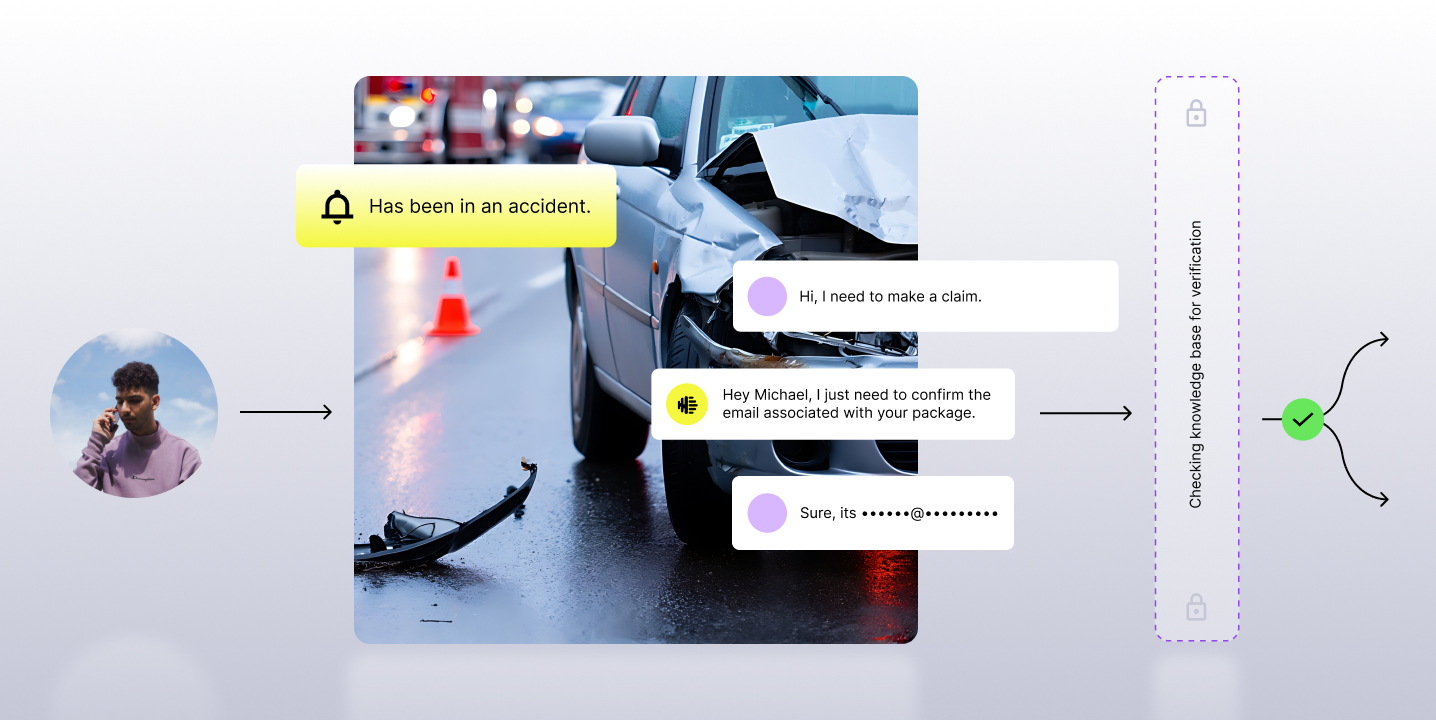Borrowed from the Radio and Television broadcasting industry, dead air is a commonly used term in BPOs and contact centers today. While dead air might be perceived as annoyance to customers, it has severe implications on key contact center metrics.
In this blog, we cover everything about dead air— the causes, implications, and methods on how to reduce or avoid it.
What is Dead Air?
Dead Air is defined as a period of silence during a customer interaction when the customer and the agent are radio silent. The reasons behind this could be— lack of agent knowledge, outdated information on the internal database or slow search software.
Why is Dead Air bad?
When customers experience an extended period of silence on a call when in fact they are looking for prompt solutions, the purpose of the call is defeated.
Dead air is harmful because it indirectly expresses an unprofessional, under-prepared sentiment about the brand. Some of the reasons are:
1. Undermines client confidence in a brand
Long periods of radio silence can potentially tarnish a brand’s image and credibility. It shows the unpreparedness on the brand's end, possibly increase customer frustration and gives them a chance to jump to possibly an unnecessary conclusions.
2. Portrays lack of professionalism
A silence can mean different things to different people; to a frustrated customer, it largely conveys the brand's unprofessionalism—
"Why isn't the agent better prepared?" or "Does the company have no resolution policy on this issue?".
3. Reduces customer satisfaction
A frustrated customer looking for resolution might cancel or escalate the call impacting important metrics like first call resolution or customer satisfaction.
What causes Dead Air?
The leading causes of dead air are often difficult and unforeseen questions by the customers, product or service knowledge gap, an agents' lack of preparedness, and slow search software among others.
Let’s take a look at four closely related factors compounding the dead air situation.
1. Lack of Coaching
When coached inadequately, in the face of fast-changing technology, products and processes, even the most seasoned agent find it difficult to handle customers. Lack of consistent and data-driven agent coaching programs is a major reason for dead air. This is not just limited to an agent's interaction with the customer; it is also their ability to use the internal knowledge base easily. The objective of coaching is to update an agent’s knowledge and expertise, hones their soft skills, etiquettes and presence of mind, and improve their overall KPI metrics.
2. Unforeseen issues
Most customers seek resolution for repetitive problems with standard solutions, but certain issues can arise out of the blue. The possible causes could be newly adopted technology by the company, lack of product information, or unique customer-specific problems.
.png)
3. Outdated internal knowledge base
Knowledge gap causes communication gap which leads to misplaced expectations with the customers. An outdated internal knowledge base can lead to resolving issues with old policies, causing unnecessary issues for the brand. When agents lack access to accurate and updated information, they automatically hesitate when faced with unwarranted customer queries. This leads to an unprofessional, under confident and an overall unpleasant interaction.
4. Slow search systems
It can be daunting for an agent to go through reams of information when handling a frustrated customer. This only gets exacerbated if an agent is unable to quickly reach the accurate topic courtesy a slow and obsolete search system.
A great example is that of an Amazon agent handling interactions with millions of products listed on the platform. Now imagine when the agent tries to access relevant product information for the customer in real-time paired with slow search systems, it is a recipe for CX disaster. Scale it to millions of customer queries every day, one can imagine the snowballing effect of a slow system.
a. Poorly indexed systems
Poorly indexed systems translates into an agent wasting valuable time trying to map a customer's query to the information. Sifting through a diverse knowledge base and quickly retrieving the exact information demands systematically indexed products. A major advantage of properly indexed systems is the instant reduction in dead air— an agent responds easily and faster to any customer query because of well-aggregated data.
b. Poor navigation skills of agents
Lacking proper navigation skills on the search system could waste precious minutes on the call. An agent struggling to find the correct information in real-time could reflect poorly on the contact center and add to the customer's frustration.
How do you deal with Dead Air?
As seen above, a number of factors contribute to dead air and avoiding it requires a holistic approach that include agent training, updated knowledge base and easy navigation on search systems.

1. Proper agent coaching and training
Agents are at the centre of action in a contact center. Investing in personalised, data-driven training programs aimed at targeted skill development can hence, go a long way in boosting their confidence while handling customer queries.
The advent of AI-driven coaching programs especially focuses on improving the most critical behavioural weaknesses in the agents. Consistent and timely agent coaching programs can ensure agents are better prepared on the field.
2. Constantly update internal knowledge base
This applies mostly to sectors with fast-changing business practices and/or technology. Customers are often unaware of newly added features, products, policies or other details, and need reassurance from a well-informed brand representative, i.e., the agent.
3. Update information systems for easier navigation
Navigation on the updated information systems must be made easy so that agents have quick access to relevant topics in real-time. This can be achieved through proper indexing, organised file management, use of clear and concise navigation titles and well-classified categories of information.
Agent training programs must also include a module on how to navigate a search system effectively to ensure that an agent is not left stranded in the middle of a call.
How do you fill Dead Air on a call?
While a reduction in dead air is ideal, it’s nearly impossible to completely eliminate it leaving the agent high and dry. In such moments, here’s a list of tips for agents to use as fillers:
1. Constantly inform clients on the resolution process
Rather than leaving the client clueless about the resolution, keep them updated about the steps being taken to arrive at a solution. Leaving a caller uninformed can make them feel abandoned and add to their anxiety. Keep feeding the caller with the resolution steps but ensure these are simple to follow and do not reveal a lot of internal processes.
2. Share promotional information
An experienced agent can anticipate an incoming dead air and use it as a great upselling opportunity by sharing promotional information like product updates, new features, policies or marketing campaigns. However, this must be done judiciously keeping the customer's temperament at the forefront.
3. Use appropriate phrases and vocabulary
Provide the agents with a script that has appropriate phrases to use during dead air.
For instance, “Kindly bear with me for a couple of minutes while I retrieve your file” or “Can I please place your call on hold for a few minutes while I go through all the details?” would be appropriate. Agents must be coached to ensure they internalize the script.
Here are a few more useful phrases that you can use to create a positive and reassuring script to fill dead air:

Tips on how to politely put customers on hold
There will inevitably be situations when you cannot avoid putting your customers on hold while you retrieve their information or work on their requests. Let’s have a look at the common gestures of courtesy that you can extend to customers in such situations:
1. Explain the reasons and ask for permission
Explaining reasons for being put on hold and reduces uncertainty on the customer’s end. Including the customer in the resolution process allows them to empathise with the brand policies. It also helps when a desired resolution is not achieved.
2. Provide a time-frame
Provide the customer with a rough estimate within which you would circle back with a solution. For cases with longer delays, check in with the customer to show their enquiry is not lost in the system or worse, abandoned.
3. Keep your word on time estimates
Over-extending the hold time could be annoying and the customer may simply hang up, severely affecting the overall customer satisfaction. Ensure you set the expectations right and meet them accordingly. If you promise 3-minutes, try to engage within 3-minutes.
4. Thank and apologise
Thanking the customer for their patience and apologising for making them wait are simple ways to express empathy towards them.
Conclusion
Dead air is a problematic parameter that contact centers strive hard to keep under check. Failing to do so affects customer satisfaction and tarnishes your brand image. Internally, this leads to inefficient operations and processes, severely affecting other related KPI’s of the contact center.
While brief moments of dead air may seem like a minor annoyance, the cumulative effect could be much more serious and debilitating for your contact center.

















